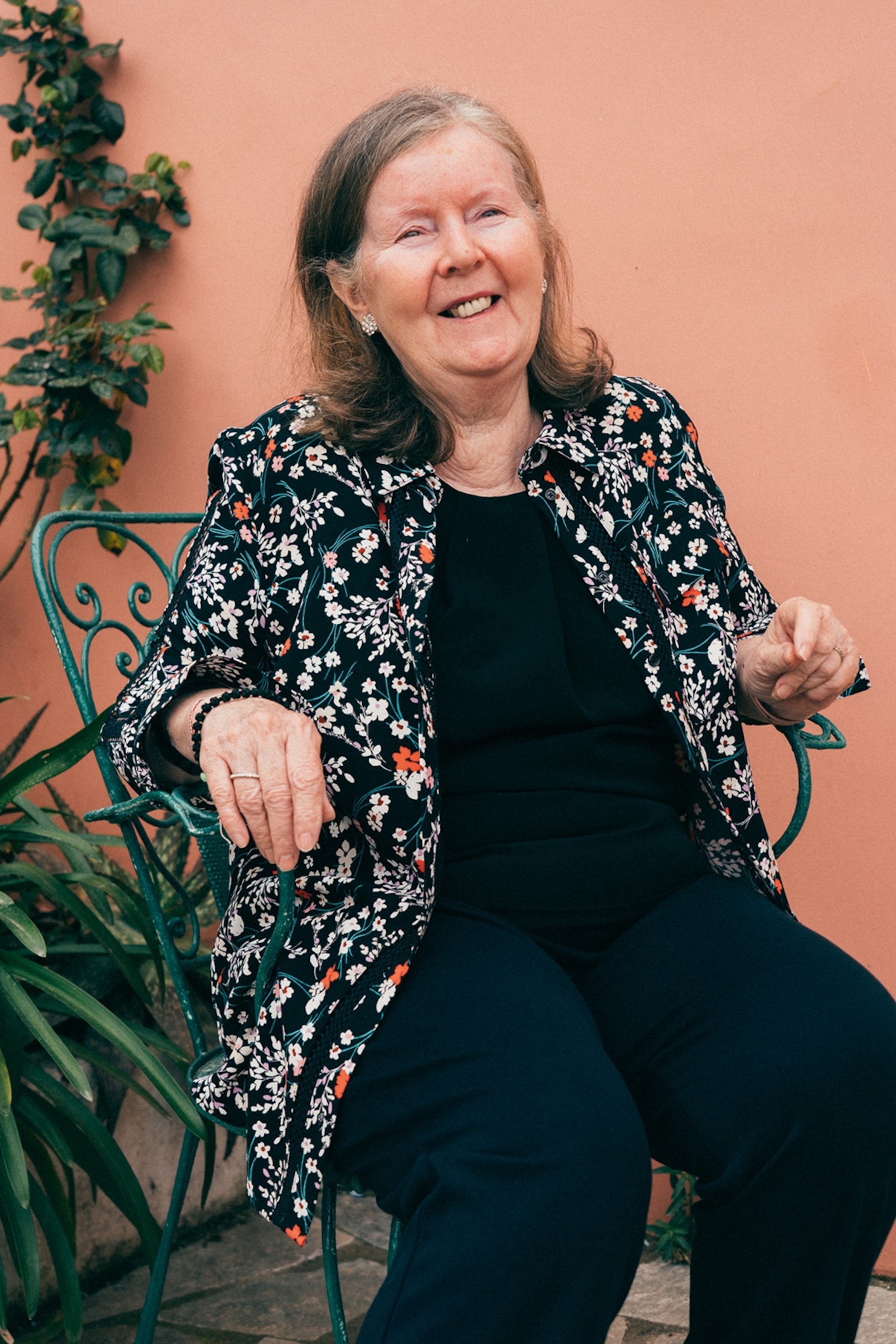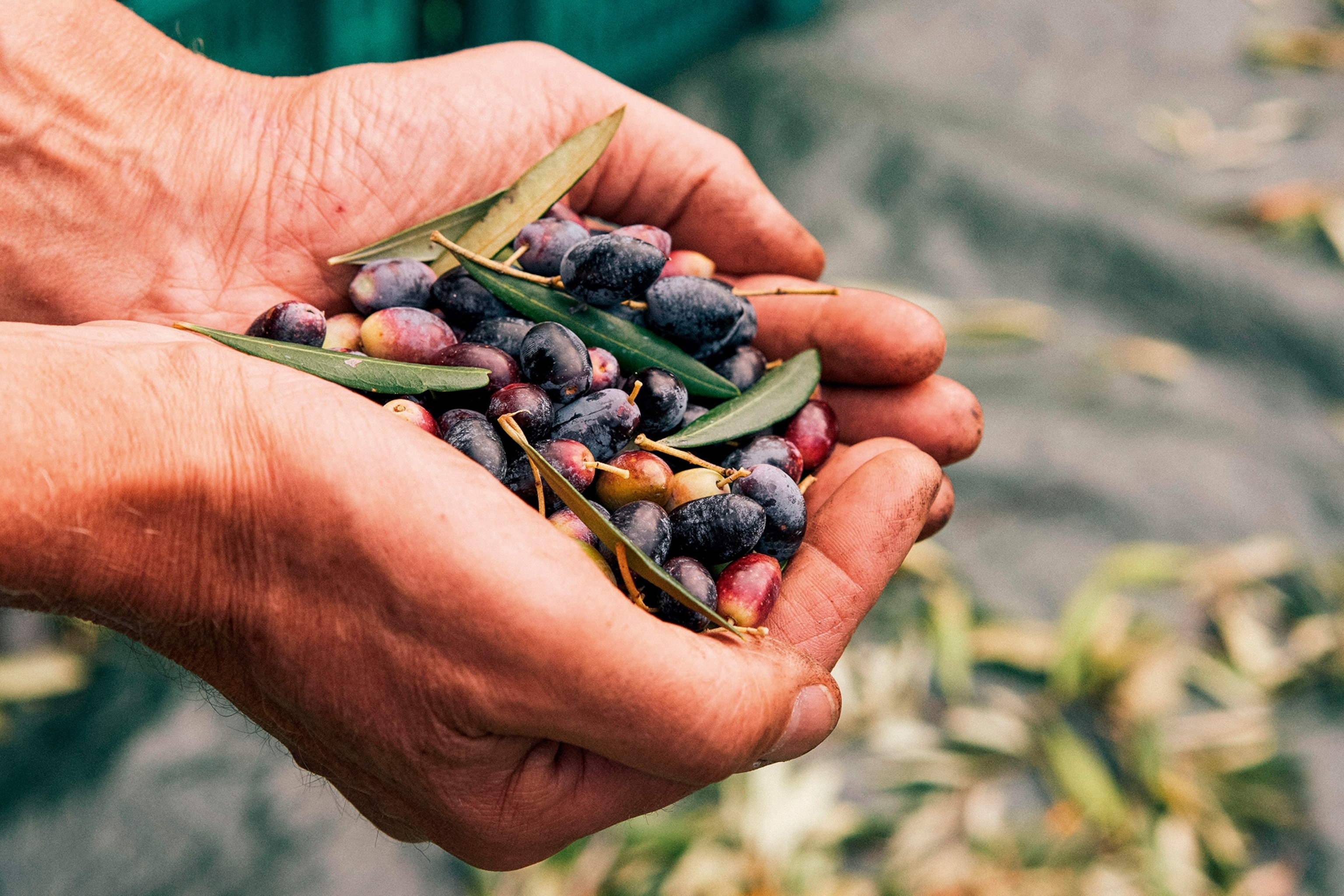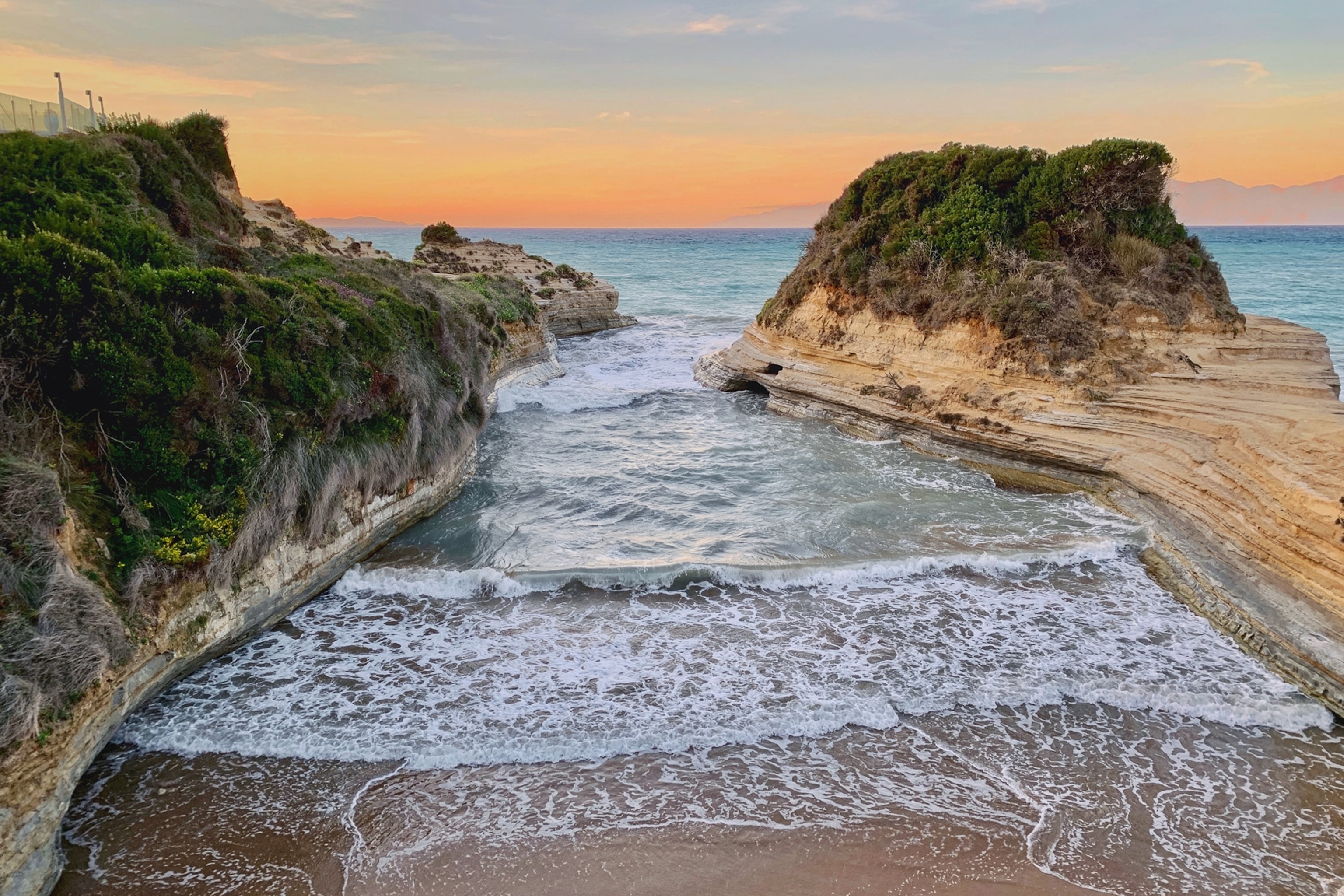This article was produced by National Geographic Traveller (UK).
As a child, Sunday mornings were spent in the kitchen of my yiayia. My Greek grandmother — or yiayia — cooked in the whitewashed shack built by my grandfather to keep the scent of frying fish and spices away from the main house. Cloves and cinnamon spiked the air as a rich tomato sauce and beef short ribs simmered away, cooking for hours before the pasta it would be served with — thick bucatini or penne to soak up the richly spiced sauce — went into a separate pot.
Pastitsada or ‘la pastizzada’ as the island’s Venetian colonisers called it, is a dish that’s been representative of Corfu for hundreds of years. Slow-cooked meat — beef, rabbit, rooster or, on occasion, octopus — is stewed in a deep-red tomato sauce for hours, flavoured with the island’s signature spetseriko spice mix. The combination of spices varies from household to household, but invariably contains cinnamon and cloves along with nutmeg, allspice, cumin and several more besides. It’s then served atop a pile of pasta — again we have our Italian neighbours to thank for this — alongside a customary Greek salad topped with a block of feta.
In that dingy kitchen, I’d watch Yiayia’s face, creased like the bark of an olive tree, hovering over a pot of bubbling tomato sauce. Sunday lunch was a spiritual experience; a time to truly appreciate the culinary magic that can be conjured with the simplest of ingredients.

My Greek grandmother — or yiayia — cooked in the whitewashed shack built by my grandfather to keep the scent of frying fish and spices away from the main house.
Photograph by Hardie Grant/Marco Argüello

Pastitsada has a distinct flavour profile. Like most of our illustrious ‘native’ dishes, it is a credit to the Venetians and their trading power across the Mediterranean and the Middle East.
Photograph by Alamy
Found in tavernas, restaurants and — more importantly — households across the island, pastitsada has a distinct flavour profile that scents the air as you stroll around Corfu’s mountain villages or the cobbled alleyways of its Venetian old town. Like most of our illustrious ‘native’ dishes, pastitsada is a credit to the Venetians and their trading power across the Mediterranean and the Middle East. They put the island on the spice trail more than 500 years ago when they colonised it, passing through the surrounding aquamarine waters, forging commercial ties between Corfu and Dubrovnik — another Venetian outpost. With them they brought powdered red pepper — both sweet and hot — and should you travel to Croatia’s Dalmatian coastline, you’ll find the same dish, known locally as pašticada and served with gnocchi instead of pasta.

Corfu is blessed with rainfall in winter that sees produce flourish. Tomatoes, sweet and plentiful, taste of sunshine.
Photograph by Getty Images
“My own yiayia followed the seasons with her ingredients and her food was always consistent in taste and generally very good,” says chef Spyros Agious, when I visit The Venetian Well in Corfu Town. Framed by tendrils of bougainvillea, his fine-dining restaurant is set around a centuries-old well in a quiet courtyard near the sea. “What I appreciated over time, and as a professional chef, is the slow cooking,” he says. “The way Yiayia sauteed the onion very slowly until it was perfectly caramelised. The result goes to another level of taste. I also learnt to find beauty in simplicity and in the quality of seasonal produce on my own island.”
While my yiayia is a ‘throw it in a pot and walk away’ kind of cook, Corfu’s most talented chefs spend years perfecting their versions of pastitsada. Chef Agious’s ravioli with cockerel is perhaps the most exquisite variation I’ve encountered. It’s served with a cream of graviera cheese, artichoke chips and hazelnut, each pasta parcel a delectable combination of flavours and textures that sings with a signature Corfu spice mix.
Driving south along the coastal road from Corfu Town, past mountains dense with olive trees and hilltop villages painted in the island’s blushing pastel tones, I arrive at Klimataria — or Bellos as it’s better known by locals — a blink-and-miss-it restaurant in the former fishing village of Benitses. The owner, Nikos Bellos, is the kind of old-school Corfiot who believes in simplicity and sticking with tradition — and will insist that every last scrap of food on your plate is eaten before he whisks it away. But I’m here to cook octopus pastitsada with his wife, Lily, to feature in my cookbook. Nikos looms over the kitchen, ready to catch us deviating from the recipe. The dish is both a signature of the island and of Klimataria — and he insists that actually, the only necessary seasoning is spicy paprika.

While Pastitsada is rustic, the humble ingredients are elevated thanks to slow cooking and clever flavour balancing. It results in me gasping and voicing superlatives like “this is the best meal I’ve eaten in Greece.”
Photograph by Marco Argüello
The other ingredients in the Bellos pastitsada are olive oil (and lots of it), onions, tomato puree and octopus. While it’s rustic, with whole octopus tentacles and the deep red sauce piled atop spaghetti, these humble ingredients are elevated thanks to slow cooking and clever flavour balancing. It results in me — and apparently numerous other diners — gasping and voicing superlatives like “this is the best meal I’ve eaten in Greece.”
Cookbook author and restaurant owner Vasiliki Karounou takes a slightly different approach for the pastitsada she serves at Ambelonas, in the grounds of a 400-year-old Venetian estate. Like the rest of the menu here, her version is the dish is inspired by her mother-in-law, whose handwritten recipe book, filled with forgotten island recipes, provided Vasiliki with all she needed to know about traditional Corfiot cuisine.
In contrast to Nikos’s simple one-spice pastitsada, Karounou does as my yiayia might and combines seven spices — cinnamon, nutmeg, cumin, allspice, hot red chilli, sweet red chilli and black peppercorns — to marinate a beef rump or shoulder, which cooks for several hours. “The sauce must be very thick, spicy and served very hot,” says Vasiliki, who also insists on using fresh tomato alongside tomato paste.
We Corfiots are snobs when it comes to our gastronomy — an attitude that stems not from cherished recipes, but from our primary ingredients. The most verdant of all the Greek islands, lush with wildflowers where others are sun-scorched, Corfu is blessed with rainfall in winter that sees produce flourish. Tomatoes, sweet and plentiful, taste of sunshine. So, while we have the Venetians to thank for the spices, as my yiayia says, Corfu is blessed with fertile ground — which is what brought the Venetians here in the first place.
Published in Issue 28 (summer 2025) of Food by National Geographic Traveller (UK).
To subscribe to National Geographic Traveller (UK) magazine click here. (Available in select countries only).



